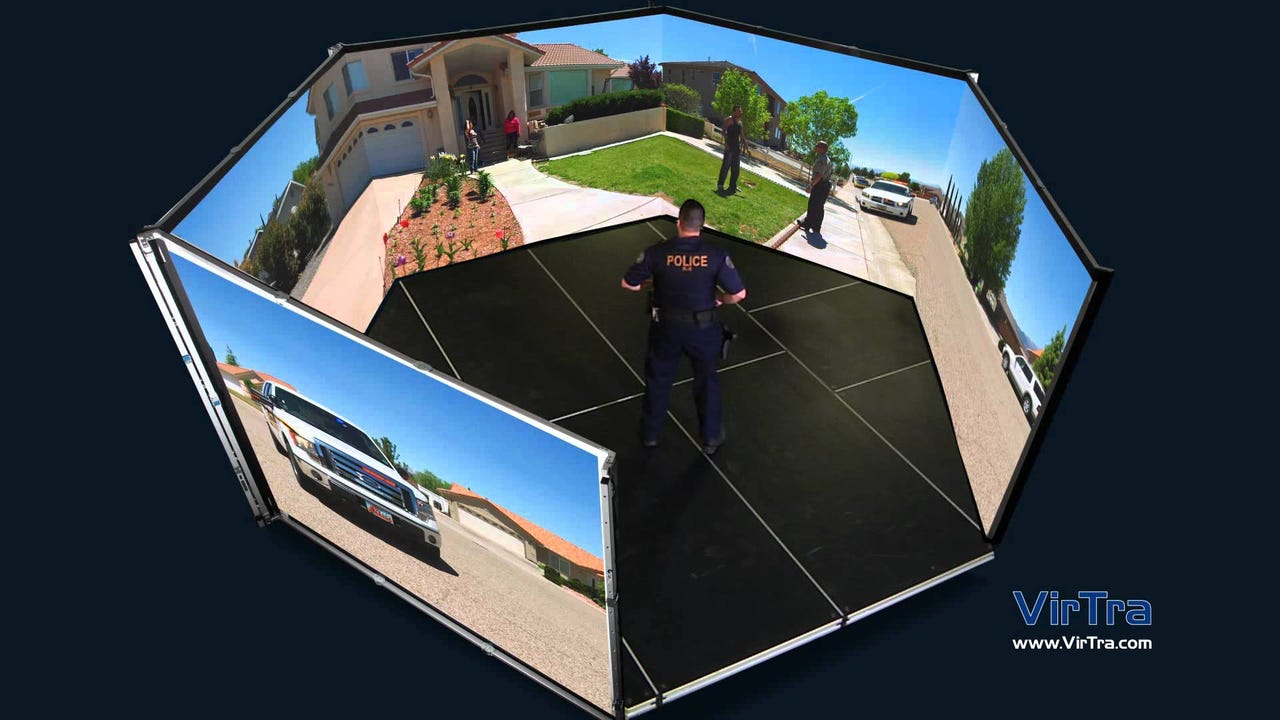SA Police receives VR firearms training simulator system


A new virtual reality (VR) firearms training simulator system is up and running at the South Australian Police Academy.
The new system is the first upgrade of the SA Police firearms training simulator in more than 10 years.
Deputy Commissioner Linda Williams said the 300-degree simulator system at the Taperoo-based academy will provide improved firearms training to officers.
Developed by Tempe, Arizona-based Virtra, the simulator provides 3D audio and special effects to hone the judgement, decision-making, and tactics of police officers via a simulated live fire range.
"The Virtra virtual reality simulator firearms and Tactical Option Simulator provides police officers with highly realistic and interactive scenarios, enhancing existing response training," Williams said in a statement.
"The system uses a range of screens and scenarios to train police to handle real-world situations as well testing factors such as communication skills, de-escalation, and appropriate responses."
Williams added that the system has been used to train instructors and cadets at the SA Police Academy since June and will now be available in other areas, including training for STAR Group officers managing high risk situations.
Police Minister Peter Malinauskas said AU$480,000 was provided for the purchase of the Virtra simulator system.
"This is a welcomed upgrade of the system already used to train police in the use of a full range of tactical options including firearms, electronic control devices, and capsicum spray," Malinauskas said in a statement.
The simulator has been used by other police jurisdictions including Victoria Police.
SA Police got a boost from the state government late last year when it announced awarding NEC Australia with a AU$780,000 contract to implement facial-recognition technology to make it easier for the police force to identify persons of interest and missing persons.
The facial-recognition technology allows police to compare images of suspects from such sources as closed-circuit television (CCTV) footage against offender databases. In future, the technology has the capacity to instantly identify people on real-time CCTV footage, but this feature won't be used on launch.
The South Australian government's decision to deploy facial identification followed the Northern Territory's implementation of the technology in 2015.
Victoria Police has similarly been receiving a series of upgrades two years after the state's police force acknowledged in a report that it was struggling to meet the demands of the public, and that inadequate investment in technology had "left Victoria Police in the 20th century".
The Victorian government announced in April that it had selected Motorola Solutions to equip its police and protective services officers with mobile technology, network services, and applications to increase situational awareness, safety, and productivity.
The five-year deal, worth more than AU$50 million, is part of the state government's AU$227 million commitment to upgrading Victoria's police force.
The state government also tasked data analytics company SAS Institute Australia with developing software that connects disparate police databases such as Leap and Interpose, so that greater intelligence can be drawn from them.
Once the disparate databases are connected, the police force will be able to use the system to link people, events, vehicles, properties, and activities, as well as ingest "open-source social media" to pair up with police information, and better identify and predict local crime trends and hotspots.
Digital solutions provider Civica has also inked a AU$103.6 million deal with the Victorian Department of Justice to build a custom infringements enforcement and warrants management system with ongoing support for eight years.
Replacing a legacy system, the VIEW system will allow the Victorian government to manage the collection of fines, civil judgement debts, and victim compensation orders.